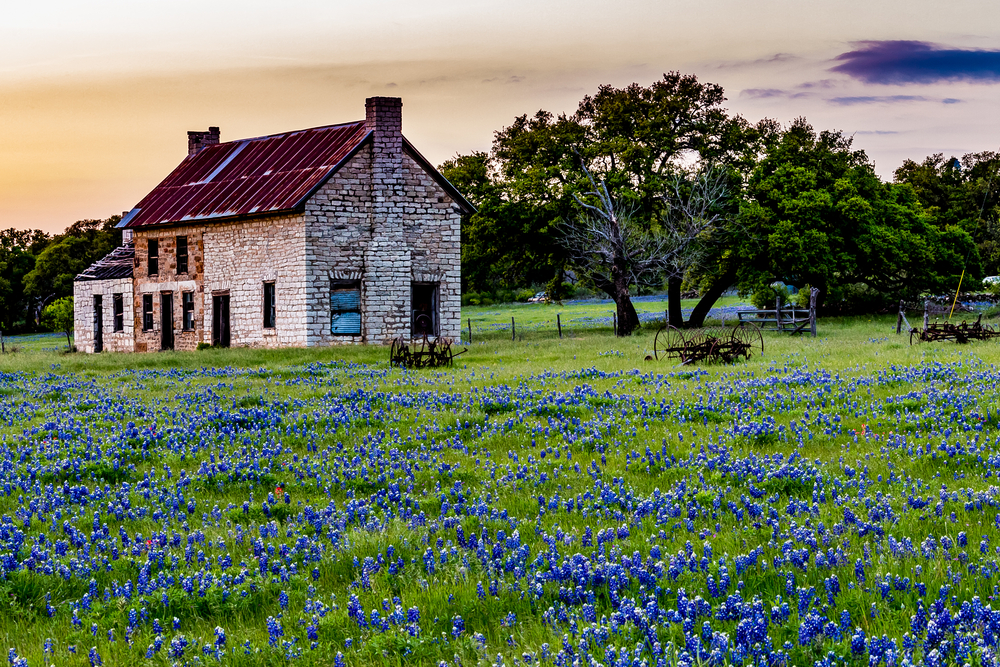Over the past few months, many Americans have turned to bread-making to stave off the boredom and helplessness of quarantine. The craze for bread-making eventually reached a point where flour mills were unable to keep up with the sharp increase in demand for their product, leaving grocery store shelves barren. But bread-making is just one strand of a much more intricate lifestyle movement which began taking shape about a year before coronavirus.
“Cottagecore,” as the trend is called, is partly an aesthetic and partly a set of ideals for “the good life.” The word “cottage” references country living as embodied by the self-sufficient and aesthetically pleasing cottage, and the slang/suffix “core” indicates a genre or category. Much in the same way that people are dedicated to certain genres of music, online communities have sprung up around certain aesthetics; one popular example is the “academia” aesthetic, which celebrates elements from 19th-century fashion and architecture that have become associated with higher education (think old leather books, marble busts, and tweed blazers).
Cottagecore also has an online community, and a glance through the cottagecore tag on Tumblr or Pinterest will give you a good idea of its aesthetic interests: frolicking goats, woven baskets bursting with ripe tomatoes, rough-hewn wooden furniture, and of course, loaves of bread. Everything is bathed in a golden haze of sunlight, or at least in a sepia-toned filter. But cottagecore also encompasses fashion, art, and even entertainment. For example, a budding genre of video games has both capitalized on and helped further cement the aesthetic and philosophy of cottagecore. In smash-hits like Stardew Valley, Harvest Moon, and to a lesser extent, the Animal Crossing series, the player leaves behind a hollow life in the city to start over in a close-knit rural community. Gameplay elements include conversing with and sometimes even romancing the locals, operating a self-sufficient farm (often through a variety of cottage-industries, such as farming, fishing, baking, and raising animals), and basking in the pristine beauty of nature. There isn’t a way to win or lose these games, or a villain the player must defeat in order to advance the plot. The closest thing to an antagonist in Stardew Valley is a Walmart-esque corporation that the player is gently encouraged to drive out of business in favor of a mom-and-pop general store.
As the Stardew Valley example shows, cottagecore is at least partly rooted in anti-capitalist sentiment. It presents an escape from the drudgery of industrial urban life, a sort of reverse rural-flight of the imagination. As Shania O’Brien optimistically puts it,
“This budding aesthetic movement paints the picture of an idyllic landscape and prioritises the simple pleasures in one’s life. Cottagecore turns its nose up at sixteen-hour workdays, at the fast-paced anxieties of late-stage capitalism, at toxic masculinity. It rejects the connections we make under these systems, labelling them inauthentic facsimiles of genuine relationships.”
At first glance, it’s difficult to discern what might be morally objectionable about a pretty moodboard on Pinterest, or what is morally objectionable about the philosophy behind that moodboard. However, indigenous people have pointed out that cottagecore is overwhelmingly white, and often unknowingly perpetuates settler colonialism. Specifically, critics argue that the aesthetic idealizes the American homestead as a beacon of self-sufficiency rather than the legacy of brutal Westward expansion. It’s worth interrogating why so many are tempted to romanticize rural life, and whether or not retreating from the problems of capitalism is worthwhile or desirable.
While cottagecore is certainly a trend of the moment, idealizing the countryside has been a common practice throughout human history. In response to the industrial revolution, many 19th century artists, like Jean-François Millet, began taking peasant life seriously as an artistic subject. The genre of “rural naturalism,” which depicted an ideal version of farmers and laborers going about their daily lives, reflected the artists’ sense of alienation from nature as well as a growing urban market for sentimental depictions of peasant life. The late 19th-century Arts and Crafts movement, which was spearheaded by socialist artists, also celebrated individual craftsmanship over the products churned out by urban factories.
Rural idealism in art is perhaps best embodied through Thomas Cole’s five-painting series titled The Course of Empire, completed in 1836. The first painting depicts an untouched and frightening wilderness, which is transformed by human cultivation into a tranquil rural paradise in the second painting. This second painting is clearly meant to represent the ideal state of mankind, which is a sharp contrast to the next two paintings in the series. These depict a decadent and immoral urban environment, as well as its apocalyptic destruction. The final painting shows the ruins of the now-unpopulated city, suggesting that desolation is inevitable when humanity leaves rural Arcadia behind. Although Cole’s series depicts a pseudo-Roman city, it was created explicitly to critique 19th-century American capitalism, and clearly reflects growing fears about urbanization and the decadence of empire.
America has always had a unique and explicitly political version of rural idealism. Thomas Jefferson, a foundational proponent of agrarianism, wrote in 1785 that “Cultivators of the earth are the most valuable citizens. They are the most vigorous, the most independent, the most virtuous, and they are tied to their country & wedded to its liberty and interests by the most lasting bands.” This statement was echoed by prominent American naturalist A.J. Downing, who succinctly explained in A Treatise on the Theory and Practice of Landscape Gardening in 1841 that “There is a moral influence in a country home.” Living in the country simply made you a better person, because you stood at a remove from the vulgar commercialism and social mixing of the city.
As Jefferson saw it, rural life isn’t isolated from the nation, but integral to it. Country, after all, can mean either a tract of rural land or a state, and thinkers like Jefferson sought to collapse the distinction between the two. In that sense, one could argue that modern rural escapism isn’t so much about retreating from reality as it is about taking part more fully in political society. However, this example also reveals a paradox of self-sufficient rural living. Jefferson’s farmer is both self-sufficient and tied down by civic responsibilities, both in society and outside of it. Also, of course, Jefferson has conveniently ignored the existence of the slaves who did the actual planting and tilling on his plantations, and the indigenous populations who lived there before him. Much like European artists of the 19th century, Jefferson is clearly promoting a certain kind of rural living as ideal with a self-serving political agenda. For artists and politicians alike, rural people were considered the “true” citizens of the state, the stable and honest antithesis to the cultural confusion of modernity.
20th-century escapees to the countryside certainly saw their rural retreat as political. The 1960s saw droves of educated middle-class city-dwellers retreating to rural communes with hopes of creating socialist utopias, as Jenny Odell touches on in her book How to Do Nothing. However, Odell found that the communes of the 1960s “exemplify the problems with imagined escape from the media and effects of capitalist society, including the role of privilege.” She explains that these communes, though ostensibly committed to egalitarianism and the rejection of privilege, often replicated the very structures they sought to escape. Women ended up doing all the dishes and menial housework, and because communes were primarily white, very few people of color were able to take part in the utopian project. Once again, it becomes apparent how difficult it is to truly escape society by returning to “the simpler things.” Furthermore, only those with privilege are able to enact their fantasies of escape. One famous historical example of this is Marie Antoinette’s Hameau de la Reine, a highly aestheticized mock peasant village built on the grounds of Versailles where the queen (who could be considered an early proponent of cottagecore) would pretend to milk cows and grow cabbages. Rural escapism almost always involves some element of privilege, evidently. Ironically enough, shots of the queen running through meadows and playing shepherdess in her hamlet, as depicted in Sophia Coppola’s 2006 Marie Antoinette film, are very popular in the cottagecore community.
The cottagecore movement borrows a vague moral sensibility from 19th-century agrarianism and marries it with socialist idealism, embodied especially by the communes of the 1960s. Much like those communes, cottagecore isn’t especially interested in those who already live in rural communities, unless they’re romanceable options in a video game. The “noble peasant,” an invention that was problematic to begin with, has disappeared from this configuration, because cottagecore is more about the desires of citydwellers than the needs of the communities they yearn to join. Cottagecore is political in that it is a response to alienation, an attempt at mapping out possibilities for a life without capitalism. But it still has a ways to go before it can truly live up to O’Brien’s description.
It’s unlikely that the damage of colonialism will be significantly worsened by Pinterest mood boards and jars of sourdough starter. There is also no evidence that young people are actually acting out their fantasies of rural retreat, so clearly cottagecore is more of a sensibility than an actual spur to change. As Odell argues, the impulse to mentally retreat from capitalism is both admirable and deserving of skepticism. As she says, “Some hybrid reaction is needed. We have to be able to do both: to contemplate and participate, to leave and always come back, where we are needed . . . To stand apart is to take the view of the outsider without leaving, always orientated toward what is is you would have left.” Much in the same vein, O’Brien suggests that “You can aesthetically participate in cottagecore, but more importantly, you can also incorporate its sentiment into your praxis by engaging in mutual aid, in environmental politics, in feminist activism. It is pointless to dream about wildflowers and serenity when you are doing nothing to bring that world closer.” Escapist fantasies can be an impetus to change, so long as they allow us to find new and more authentic forms of connection with others.


